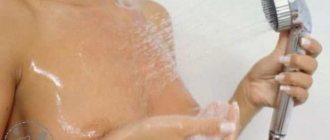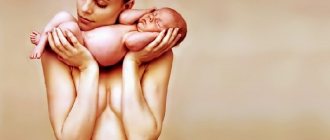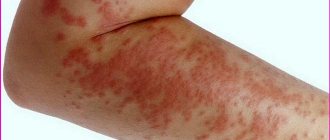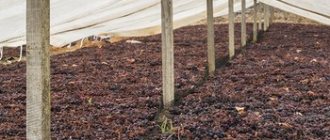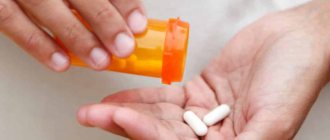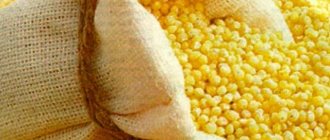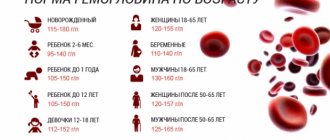Causes of candidiasis
Conditionally pathogenic microorganisms – fungi of the genus Candida – are constantly present in the body. They get the opportunity to intensify their activities when their immunity decreases. The body stops resisting the growth of fungi, and painful symptoms appear.
- The main provocateur of thrush, both during pregnancy and after childbirth, is a change in hormonal levels. The risk of developing candidiasis increases due to the influence of unfavorable factors.
- Breastfeeding changes hormonal levels, and also takes strength from the mother, reducing immunity. The presence of candidiasis provocateurs certainly leads to its development. Discharge after childbirth and congestion in the pelvic organs create favorable conditions for the development of genital thrush.
- Often, after a difficult birth, a woman is prescribed antibiotics in the form of vaginal suppositories to prevent inflammatory processes. Such therapy can lead to disruption of the vaginal microflora and promotes the growth of fungi.
- After giving birth, a woman can expect sleepless nights, stress, nervous tension, and fatigue. Against this background, the body’s protective functions decrease and candidiasis develops.
- During pregnancy, a woman’s body weight increases, and an even greater weight gain occurs during breastfeeding. Metabolic disorders and excess weight also cause candidiasis.
The risk of developing thrush increases when exposed to several unfavorable factors.
Thrush provocateurs:
- lack of personal hygiene;
- use of gaskets;
- products for intimate procedures;
- using a condom;
- the presence of sweets and yeast-based flour products in the diet;
- drinking beer, kvass;
- hypothermia;
- intestinal dysbiosis;
- diseases of the digestive tract;
- infected sexual partner.
In addition to vaginal candidiasis in women, thrush of the breast and oral cavity may develop after childbirth. The reasons are similar. But breast thrush develops more often if a child has oral candidiasis. Then the fungus gets into the cracks in the nipples and begins to multiply.
Symptoms
The manifestation of thrush has one characteristic feature - the presence of white cheesy discharge with a sour odor. As well as unbearable itching, which intensifies in the evening.
Symptoms of genital thrush:
- specific secretions;
- sour smell;
- itching;
- burning during urination, sexual intercourse;
- pain at the end of emptying the bladder;
- discomfort in the lower abdomen;
- swelling, redness of the vagina;
- false urge to urinate, frequent trips to the toilet.
If thrush is caused by external factors - synthetic underwear, pads, hygiene products, unpleasant symptoms intensify after contact with the provocateur.
Symptoms of breast candidiasis:
- discharge;
- white coating on the nipples;
- pain during feeding;
- presence of cracks;
- swelling;
- redness.
Oral thrush is rare in women. Only if oral hygiene is not observed.
Symptoms of thrush vary from person to person. They may appear stronger or weaker. In the absence of proper therapy, frequent relapses occur, and candidiasis becomes chronic.
Symptoms of thrush
Thrush can manifest itself in different ways depending on the form of its course. So, with a chronic course, a woman may either have virtually nothing to bother her, or some unpleasant sensations will appear that periodically intensify, namely:
- Feeling of itching, tingling in the area of the labia, entrance to the vagina, perineum.
- The volume and nature of the discharge increases: it becomes more abundant, has a cheesy appearance, sometimes just significant white leucorrhoea, with a sour smell. If there are other sexually transmitted infections against the background of thrush, then the clinical picture changes. The discharge may become yellowish or even greenish in color, with an unpleasant, putrid (purulent) or fishy odor.
- Redness of the labia and perineum is also possible. Severe itching may cause scratching.
Thrush can have a continuous relapsing course, when some of its symptoms are constantly present. Most often, all symptoms worsen in the second phase of the cycle, especially on the eve of menstruation.
An acute episode of thrush has a much more vivid clinical picture: severe unbearable itching, redness and swelling of the genitals, etc. Here it is necessary to provide assistance as quickly as possible, since candidiasis brings significant concern to a woman.
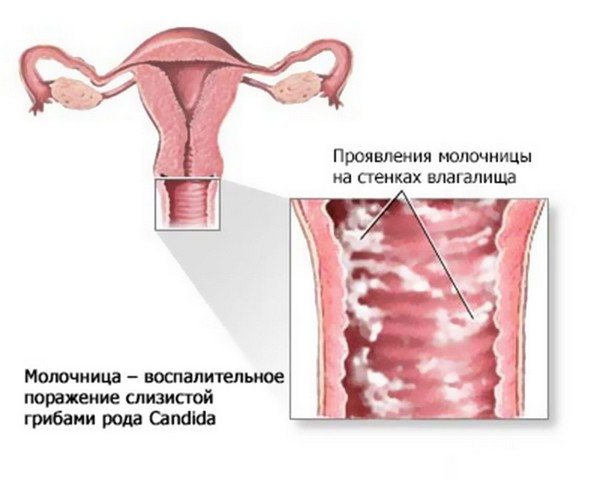
Mom's treatment
There are a huge number of drugs for the treatment of candidiasis, but the difficulty lies in the fact that the active components pass into breast milk, so breastfeeding is a contraindication.
Symptoms of candidiasis vary. From slight itching with whitish discharge. To terrible problems with urination. In the first case, you can get by with folk recipes, which is what experts advise. In the second case, you will have to undergo a full course of therapy for candidiasis and, for the duration of treatment, transfer the child to artificial feeding and express breast milk.
Do not forget that thrush is an investigative disease. In order to finally get rid of painful symptoms and prevent relapses, it is necessary to direct efforts to strengthen the immune system. It is not so easy to cope with candidiasis against the background of hormonal changes, since after the end of feeding there will be a restructuring of hormones again. In this case, it is necessary to minimize the effect of negative factors, try to rest, and get enough sleep. So that the body does not weaken completely.
Rules for the treatment of thrush during breastfeeding:
- Stick to a diet. Do not eat a lot of sweets and flour products. Yeast-based baked goods, kvass, beer, and carbonated drinks are prohibited.
- Do not use medications without consulting a specialist. Even if these are topical suppositories.
- To defeat genital thrush, it is necessary to normalize the intestinal microflora. This organ is responsible for the absorption of useful components, vitamins, minerals, and strengthening the immune system.
Even seemingly safe medications such as vitamins and probiotics can harm a child and cause an allergic reaction. You should not start treatment without consulting a specialist. Carefully monitor the child’s condition – behavior, skin. If there are rashes, bloating, moodiness, tearfulness, therapy should be discontinued.
Treatment for breastfeeding with folk remedies
Therapy for thrush should be comprehensive - diet, proper rest, good sleep. Local painful symptoms are eliminated using traditional medicine recipes.
- Add 1 teaspoon of baking soda and salt to 1 liter of water. Bring to a boil. Allow to cool slightly. 10 drops of iodine are administered. Douching or thoroughly washing out the vaginal contents with your fingers. The procedure is repeated daily in the morning, before bedtime. After the first time the condition returns to normal. And after 10 days of therapy, you can completely forget about candidiasis. This is one of the most effective recipes for thrush, safe during breastfeeding.
- Treatment with honey should be carried out carefully. A contraindication is an allergic reaction in the mother or child. If the beekeeping product is received well, it is used to prepare a product for douching or lubricating the genitals. Honey is dissolved in water, poured into a pear, and douched. Or moisten a tampon with the medicine and insert it into the vagina before bed. The course of therapy is about 10 days. Honey relieves itching, inflammation, helps restore mucous membranes, and stops the growth of fungi.
- Medicinal herbs help cope with candidiasis . As practice has shown, calendula turned out to be the most effective. The flowers are poured with boiled water, allowed to brew for at least half an hour, and filtered. Douching, washing or moistening the tampon. The procedure is done twice a day for 10 days.
- An excellent remedy for thrush is green tea . Stops the growth of pathogenic microorganisms, is an antiseptic, and when taken orally increases the amount of milk. Compresses are applied to the chest and inserted into the vagina using a tampon at night or by douching.
- Tea tree oil eliminates the unpleasant symptoms of thrush, removes toxins, and inhibits the activity of fungi. Lubricate the vagina with oil, insert it using a tampon, add it to water, and douche. The simplest and most comfortable way to treat candidiasis is to add oil to a bath and lie in it for at least 20 minutes. An effective procedure for vaginal and breast thrush.
These are the safest and most effective means for the treatment of candidiasis during pregnancy and breastfeeding. If therapy does not give the desired result, it is necessary to undergo full treatment with medications and antifungal drugs. It is not recommended to do this yourself.
Special preparations
It is prohibited to use tablets to inhibit fungal activity while breastfeeding. If they cannot be avoided, the child is transferred to artificial nutrition while therapy is carried out. It is allowed to use topical antifungal drugs in the form of suppositories, ointments, and creams.
When breastfeeding, suppositories are prescribed: Terzhinan, Pimafucin, Livarol, Clotrimazole. Suppositories are inserted into the vagina before bedtime. The course of therapy is from 5 to 14 days. If during the treatment period the child has an allergic reaction - skin rashes appear, therapy should be stopped and consult a specialist.
Drugs in the form of cream act similarly. The use of Candida, Monistat, Hexoral, Nystatin ointment is allowed. It is necessary to use twice a day - in the morning, before bedtime. The average course duration is 10 days.
Why does thrush appear in a nursing mother?
Fungi of the genus Candida
Very often, vaginal candidiasis worsens during pregnancy. This is facilitated by increased changes in a woman’s hormonal levels. It is impossible to actively treat thrush during this period, so after childbirth it manifests itself in all its glory. But during lactation you definitely need to address this issue.
Therapy during breastfeeding goes in two directions: destroying the fungus and creating conditions that prevent its further reproduction and development. Treatment should be comprehensive: in addition to vaginal medications, it is necessary to maintain hygiene and eat right.
After all, the active ingredients of the drug enter breast milk, and the baby will receive them through milk. This can negatively affect the baby’s health, for example, the risk of developing allergies or intestinal dysbiosis increases. Therefore, topical medications come to the rescue: ointments, suppositories, special solutions.
Treatment of thrush during lactation has its own specifics. Some anti-candidiasis medications are prohibited because they may harm the baby. The main emphasis is on the use of local drugs in combination with traditional methods. Their effect can be enhanced by a properly organized lifestyle of a young mother.
Candles for thrush
Vaginal suppositories are the main remedies for thrush during breastfeeding. They act at the local level, absorption into the blood is insignificant, the risk of the drug affecting the child is minimal. There is no need to stop feeding. Used for vaginal candidiasis.
Suppositories are divided into two types: antifungal (Pimafucin, Clotrimazole) and restoring normal microflora (Bifidumbacterin). The drug must be administered into the vagina in the evening, before bedtime. Treatment cannot be interrupted; the course must be complete. This will help avoid relapses of the disease.
Treatment of thrush in women who are breastfeeding also involves treating the affected areas with antifungal creams, ointments and solutions. Similar agents include Candide, Hexoral, Monistat, and nystatin ointment. They will help eliminate discomfort on the external genitalia and nipples.
Along with the use of antifungal agents, it is necessary to restore the microflora of the areolas. To do this, dry Lactobacterin powder must be diluted with water to a cream consistency and applied to the nipples. There is no need to rinse off. Such applications quickly eliminate the symptoms of the disease and are harmless to the child.
Thrush during lactation is not treated with oral tablets. The active ingredients of such drugs easily penetrate into the blood and breast milk, and they are contraindicated for children. In severe cases, when the infection spreads throughout a woman’s body, antibiotics cannot be avoided. In this case, you will need to interrupt breastfeeding for the period of treatment.
These are topical antifungal tablets. They are used in the same way as candles.
Treatment can be made more effective by following some lifestyle recommendations:
- continue to breastfeed the baby, otherwise there is a high risk of milk stagnation;
- adhere to hygiene rules (wash your breasts and hands after using the toilet and outside, keep your underwear clean, do not use breast pads or change them after each feeding);
- stick to a diet without products containing yeast, control the amount of sugar in the diet;
- choose underwear from breathable fabrics (cotton), loose clothing;
- take air and sun baths (if the surface of the chest is affected).

These methods are more gentle, but to achieve lasting results, you need to carry out the procedures regularly, over a long period of time. There is no quick cure this way.
The following are considered the most effective folk methods:
- treating the skin of the chest and external genitalia with decoctions of anti-inflammatory herbs (St. John's wort, chamomile, calendula);
- douching with herbal decoctions (a mixture of chamomile, calendula and oak bark);
- treating the skin of the chest and external genitalia with a solution of soda (for half a liter of water - 2 tsp of soda).
Green tea is known for its cleansing properties. It prevents the growth of fungus, so it is worth including this drink in your daily diet. Treatment of thrush during lactation with folk remedies is especially indicated when general medications are prohibited.
There are several reasons for the development of postpartum candidiasis; for many, the roots are different.
- Synthesis of biolactate, requiring the consumption of proteins, cholesterol and carbohydrates.
- With its help, the transfer of antibodies of all types to the baby until his own bone marrow begins to work. It leads to long-term preservation of their reduced levels in the blood and body tissues of a nursing mother, increases the rate of production of new ones, but only if there is a resource for this.
- Recovery after injuries - ruptures or surgical incisions during natural childbirth, cesarean section.
- The extinction of the production of fetoproteins - special semi-hormones that stimulate the growth of the embryo throughout gestation. They are partly produced by his own organs, partly by the mother’s. And their detection outside of gestation indicates the presence of a malignant tumor in the body.
- Increasing levels of prolactin and oxytocin - hormones of lactation and maternal instinct.
Taken individually, they are not related to the behavior of the microflora of the skin and mucous membranes. But they change their acidity, degree of moisture, regeneration rate and other parameters that determine the “living conditions” of bacteria and symbiotic fungi. The remaining “items” of accelerated consumption of protective and nutritional components weaken resistance in general and maintain a “condition” favorable for pathogenic (and not beneficial) microflora.
Should my husband be treated and how?
Men often act as carriers of candidiasis; the disease occurs latently or with mild symptoms, which periodically make themselves felt. One of the causes of thrush in women who are breastfeeding is an infected partner. To get rid of candidiasis completely and prevent mutual infection, both partners need to be treated. How to treat a husband if his wife has thrush?
In the presence of painful symptoms, men are recommended to use ointments and topical creams. The drugs eliminate itching, burning, swelling, redness, normalize the process of urination, and inhibit the activity of pathogens. The product is used twice a day for 10 days. Relief occurs after the first use.
The most effective drugs:
- Nizoral;
- Clotrimazole;
- Kanizol;
- Candide;
- Agisthen;
- Nystatin ointment;
- Pimafucort;
- Miconazole;
- Zalain;
- Triderm.
An absolute contraindication to the use of any drug is individual intolerance to the components. A test should be performed before active use.
Both in the presence of painful symptoms and in their absence, it is recommended to undergo drug treatment with tablets. Modern antifungal drugs act quickly; just one tablet is enough to reduce the level of opportunistic microorganisms to an acceptable level. An example of such drugs is Fucis, 150 mg is taken once.
If a man’s thrush is in full swing, in order to get rid of it, an integrated approach is necessary. Be sure to follow a diet and give up bad habits, especially alcohol. Eliminate physical and emotional fatigue. Take medications to normalize intestinal microflora, vitamins, and in severe cases, immunostimulants.
Treatment for hepatitis B
Acute or chronic thrush after childbirth, the signs of which cannot always be noticed on your own, must be cured. Only a specialist can provide reliable and high-quality therapy. After all, often subclinical forms are a kind of marker of the presence of another pathology, for example, glucose tolerance.
Before starting therapy, you should undergo at least a minimal examination. It includes:
- complete blood count, glucose level test;
- smears on vaginal flora, and also preferably PRC;
- bacteriological culture for the most common sexually transmitted infections.
If necessary, the list can be expanded.
Sometimes, in order to get rid of candidiasis, you just need to normalize your blood sugar or lose weight. Without this, any treatment will be ineffective and temporary.
Treating mom
It is often not enough to use only suppositories for thrush after childbirth; it is advisable to carry out systemic antifungal, immunostimulating treatment. You should also take into account whether the woman is breastfeeding; the range of drugs in this case is much narrower.
For a single episode of acute candidiasis, it is enough to take oral medications. Fluconazole (Flucostat, Diflucan, Mycosist and others) is effective, but it passes into breast milk in large quantities, so other medications should be used during lactation. If necessary, you can replace it with nystatin, but even for this it is recommended to temporarily stop breastfeeding.
During lactation, even an acute episode of thrush is best treated with suppositories. It is safe to use ginesol, pimafucin, terzhinan.
The treatment of chronic vaginal candidiasis should be treated more carefully; several courses are often necessary, which depends on the duration, severity of manifestations and the presence of concomitant pathology.
In this case, systemic treatment must be combined with local treatment, and immunostimulating drugs must also be used.
For example, you can consider the following scheme (also allowed during lactation):
- Terzhinan, one suppository at night for 10 days for three cycles in the second phase.
- Courses with interferon rectally for 5 - 7 days in the first phase of the cycle.
- Preparations based on lactobacilli systemically for at least 2 - 3 months, for example, Linex or Bioflor (two tablespoons three times a day).
But each case should be considered individually.
Should my husband be treated and how?
Candida colpitis is not a sexually transmitted infection, but the fungus from the vaginal mucosa, of course, gets onto the man’s penis and can contribute to the development of unpleasant sensations for him. But even in their absence, it is better to carry out preventive treatment of thrush. For this, a single dose of 150 mg of fluconazole will be sufficient; you can combine this with the use of nystatin ointment if it has itching, burning, white plaque, etc.
Possible complications
In the absence of qualified treatment, candidiasis becomes chronic. The frequency of relapses depends on the body's defenses. With weakened immunity, the fungal infection spreads to neighboring organs.
Fungi penetrate through the urinary ducts into the bladder. Inflammation begins and cystitis develops. The painful symptoms of thrush include aching pain in the lower abdomen or cramping. Frequent urge to urinate, there is a false urge, a feeling of fullness in the bladder. Cloudy urine mixed with blood appears. General health worsens, temperature rises to 37 degrees Celsius.
Recurrent thrush disrupts the functionality of the reproductive system, which in severe cases leads to infertility. Of course, if a woman has given birth to a second child and does not plan to give birth again, she cannot be frightened by infertility. But against the background of recurrent thrush, the state of health worsens, the quality of life decreases, and sexual intercourse does not bring pleasure.
The fungus can be localized in any part of the body, in any organ. The consequences can be very serious. The kidneys, heart, gallbladder, brain, and skin become infected. At first glance, a harmless thrush leads to terrible diseases of internal organs and systems.
You can avoid all this. If you seek help from specialists in a timely manner, take appropriate measures, follow the rules of prevention.
How to prevent thrush after childbirth?
To stop the proliferation of harmful fungus, it is necessary to direct efforts to strengthen the immune system, normalize the intestinal microflora, and eliminate the influence of negative factors.
A nursing woman's diet is different from her usual diet. But, if the child does not have a tummy ache or an allergic reaction, the mother can afford to eat a lot. Sweets, coffee, and flour products provoke thrush. They should be excluded. Be sure to eat fermented milk products and drink green tea. These products improve the functionality of the intestines, help increase the amount of milk, and have a beneficial effect on the baby’s body.
In order for the body to get stronger and begin to fight fungi on its own, you need to rest, get enough sleep, and try not to get nervous. The second most common cause of candidiasis is prolonged depression, postpartum stress, and lack of sleep. To strengthen your immune system, spend more time outdoors.
